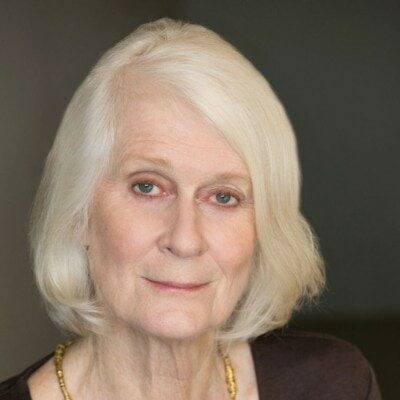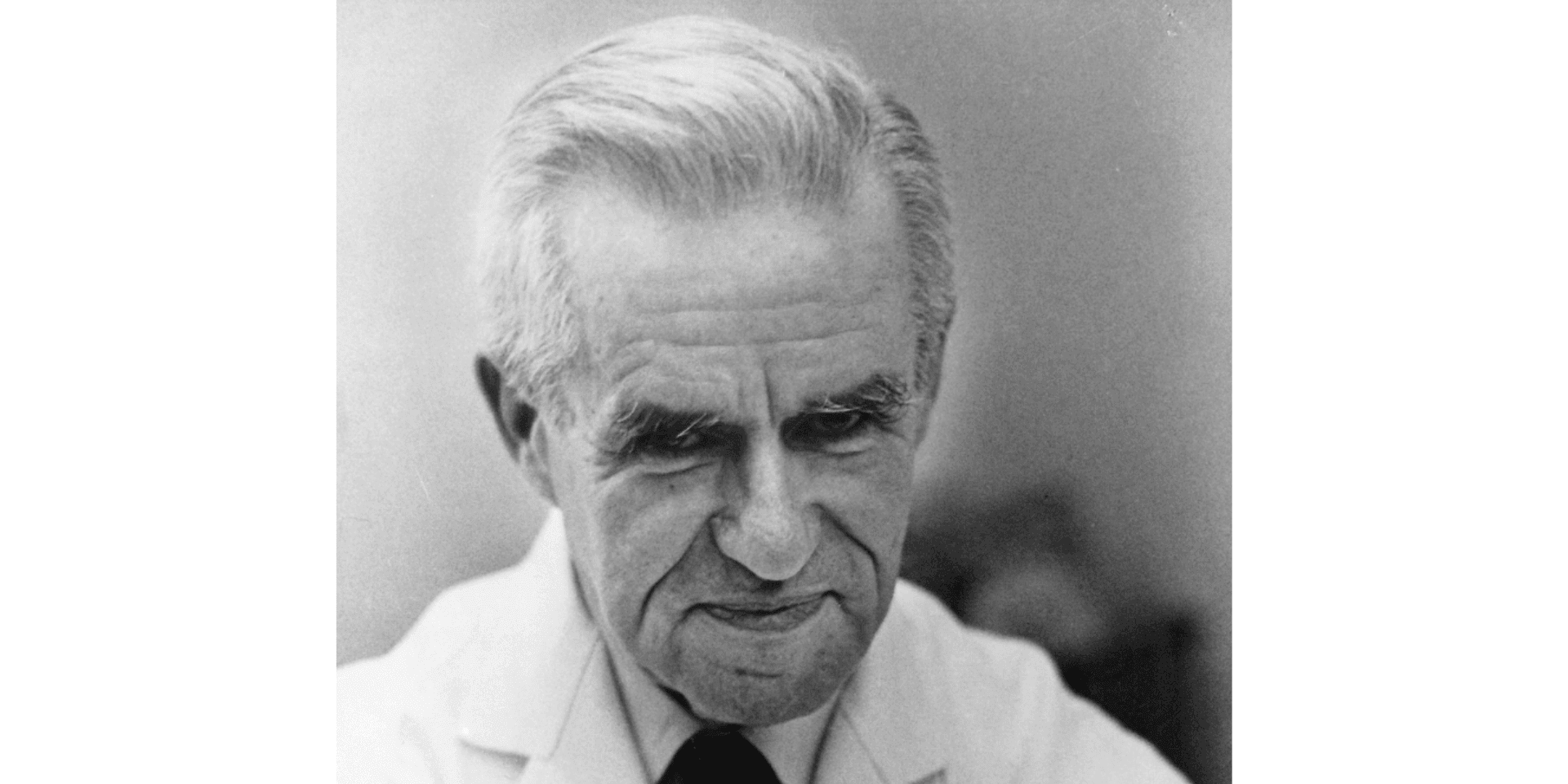The Maxwell Finland Award for Scientific Achievement is presented annually by the National Foundation for Infectious Diseases (NFID) to honor scientists who have made outstanding contributions to the understanding of infectious diseases and public health.
First presented in 1988, the Award is named for Maxwell Finland, MD, former member of the NFID Board of Directors. Dedicating his life to teaching, clinical research, and patient care, Dr. Finland pioneered work in the diagnosis, treatment, and epidemiology of bacterial infections; the evaluation of antimicrobials; and the demonstration of the evolving problem of antimicrobial resistance. He was a driving force in shaping infectious disease training programs in the United States and in defining the discipline of infectious diseases as we know it today.
The recipient of the 2020 Maxwell Finland Award, Claire V. Broome, MD, has had a profound influence on global vaccine policy-making, including advising the World Health Organization (WHO) and other organizations on vaccines, disease burden and surveillance, and outbreak detection and response. Her conceptualization and use of the “Indirect Cohort” approach to measuring the effectiveness of pneumococcal polysaccharide vaccine has become a landmark in observational studies of vaccines. A former US assistant surgeon general and acting director of the Centers for Disease Control and Prevention (CDC), Dr. Broome is currently an adjunct professor of global health at the Rollins School of Public Health at Emory University. Dr. Broome’s scientific accomplishments, leadership, and mentorship have placed her at the forefront of infectious disease epidemiology and public health for the past 40 years. In presenting the 2020 Maxwell Finland Award for Scientific Achievement to Dr. Broome, NFID recognizes her work as an influential scientist who has made outstanding contributions to the understanding of infectious diseases and public health.
Tribute Video
Acceptance Remarks
An Interview With Dr. Broome
What is your greatest professional accomplishment?
 Strategic use of observational epidemiologic studies for vaccine evaluation. Randomized controlled trials are incapable of answering key questions about vaccines. I developed the Indirect Cohort method, sometimes referred to as the Broome method, to estimate the effectiveness of the original pneumococcal polysaccharide vaccine in older adults in the United States. The vaccine had been licensed based on randomized controlled trials in South African gold miners, a substantially different population. Since then, the Indirect Cohort method has been used to look at serotype-specific effectiveness of the pneumococcal conjugate vaccine, and effectiveness of different dosage schedules.
Strategic use of observational epidemiologic studies for vaccine evaluation. Randomized controlled trials are incapable of answering key questions about vaccines. I developed the Indirect Cohort method, sometimes referred to as the Broome method, to estimate the effectiveness of the original pneumococcal polysaccharide vaccine in older adults in the United States. The vaccine had been licensed based on randomized controlled trials in South African gold miners, a substantially different population. Since then, the Indirect Cohort method has been used to look at serotype-specific effectiveness of the pneumococcal conjugate vaccine, and effectiveness of different dosage schedules.
Similarly, the group A meningococcal polysaccharide vaccine was licensed in the US based on short-term protection against outbreaks in young adults, and was immunogenic in young children. After a mass campaign administered the group A meningococcal polysaccharide vaccine in Burkina Faso, we designed sequential annual case-control studies to evaluate the duration of protection. By the third year after the campaign, the study, led by Art Reingold, found a rapid decline in protection among those vaccinated under the age of 4 years. This study was pivotal in supporting the need for a conjugate vaccine for prevention of group A meningococcal meningitis epidemics in sub-Saharan Africa, instead of relying on epidemic response with the polysaccharide vaccine.
What is the greatest challenge you have faced in your career?
 The greatest challenge has been the lack of funding for prevention and public health, especially compared to the funding available for treatment of health conditions. Communicating the value of prevention and the value of government programs continues to be an enormous challenge. As we are seeing with the novel coronavirus, and was evident with the 2014-2015 West African Ebola outbreak, the media tends to focus on the severity of the clinical illness and the deaths, rather than educating the public about how to effectively control the spread of epidemics. The public’s fear would be better addressed by understanding the public health approach—rapid case identification, etiologic diagnosis, investigation to determine means of spread, followed by appropriate control measures—e.g., screening, isolation, quarantine, and healthcare worker protection. It’s too bad prevented cases are unable to talk to their Congressperson about funding priorities.
The greatest challenge has been the lack of funding for prevention and public health, especially compared to the funding available for treatment of health conditions. Communicating the value of prevention and the value of government programs continues to be an enormous challenge. As we are seeing with the novel coronavirus, and was evident with the 2014-2015 West African Ebola outbreak, the media tends to focus on the severity of the clinical illness and the deaths, rather than educating the public about how to effectively control the spread of epidemics. The public’s fear would be better addressed by understanding the public health approach—rapid case identification, etiologic diagnosis, investigation to determine means of spread, followed by appropriate control measures—e.g., screening, isolation, quarantine, and healthcare worker protection. It’s too bad prevented cases are unable to talk to their Congressperson about funding priorities.
As a medical student in 1974, I had the honor of serving on the Joint Committee on the Status of Women at Harvard Medical School. We wrote a report about the subtle discrimination faced by women in medicine, including examples of women students who were not taken seriously by their male professors. I believe we have come a long way since then; however, I applaud continued efforts in 2020 by women and underrepresented minorities to educate society, and ask all of us to recognize our own blind spots.
Describe a specific project or situation that has had a profound impact on you to this day.
 During the period when the Haemophilus influenzae type b (Hib) polysaccharide vaccine was licensed for children 18 months and older, pressure mounted for rapid development and licensure of Haemophilus b conjugate vaccines, which appeared likely to elicit an immune response to the Hib polysaccharide antigen in infants. Two teams were leading the research—Porter Anderson and David Smith at the University of Rochester and John Robbins and Rachel Schneerson at the Food and Drug Administration (FDA), then at the National Institute for Child Health. While there was competition between their laboratories, I would go to lunch at John and Rachel’s lab when I was in Bethesda for FDA vaccine meetings. Porter would be there—the obvious friendship, encouragement, and collaboration came through so clearly.
During the period when the Haemophilus influenzae type b (Hib) polysaccharide vaccine was licensed for children 18 months and older, pressure mounted for rapid development and licensure of Haemophilus b conjugate vaccines, which appeared likely to elicit an immune response to the Hib polysaccharide antigen in infants. Two teams were leading the research—Porter Anderson and David Smith at the University of Rochester and John Robbins and Rachel Schneerson at the Food and Drug Administration (FDA), then at the National Institute for Child Health. While there was competition between their laboratories, I would go to lunch at John and Rachel’s lab when I was in Bethesda for FDA vaccine meetings. Porter would be there—the obvious friendship, encouragement, and collaboration came through so clearly.
Carolyn Hardegree was the FDA Vaccines and Biologics Division Director at that time. She made it clear to the three vaccine manufacturers that randomized controlled efficacy trials in infants would be required for licensure—not just immunogenicity equivalence to a licensed product. Her clarity was prescient and fortunate, as the clinical trial conducted in Alaska natives did not demonstrate efficacy for one of the vaccines. However, successful trials of two different vaccines were completed shortly thereafter; two vaccines were licensed for US infants in late 1990, leading to the virtual disappearance of Hib meningitis in this country. The prevention of approximately 20,000 cases a year of severe disease is comparable in magnitude to the prevention of paralytic polio cases—but far less familiar to the public. We have missed an opportunity to recognize the value of prevention, and of effective collaboration among government, academic, pharmaceutical companies, clinicians, and parents.
Who has had the greatest impact on your professional career development? What inspired you to work in the field of infectious diseases?
Morton Swartz was the chief of the Infectious Diseases Unit at the Massachusetts General Hospital when I was a clinical ID fellow. He was a remarkable clinician, renowned throughout the hospital for his clinical gifts and encyclopedic knowledge. I was in awe of his skills, but recognized that my interests and insights were in quantitative analytic problem-solving, which I had undertaken with David Fraser, my Epidemic Intelligence Service (EIS) supervisor at the Centers for Disease Control and Prevention (CDC). So, I returned to CDC and analytic epidemiology after my ID fellowship.
Who do you most admire, and why?
 Anne Schuchat (recipient of the 2018 NFID John P. Utz Leadership Award). She has had a remarkable career, starting with innovative epidemiologic research in bacterial diseases, then playing key roles in CDC emergency responses including the 2009 H1N1 pandemic influenza response, the 2003 SARS outbreak in Beijing, and the 2001 bioterrorist anthrax response. Since 2006, she has been in strategic leadership roles as the director of CDC’s National Center for Immunization and Respiratory Diseases, the acting director of CDC, and now the principal deputy director of CDC.
Anne Schuchat (recipient of the 2018 NFID John P. Utz Leadership Award). She has had a remarkable career, starting with innovative epidemiologic research in bacterial diseases, then playing key roles in CDC emergency responses including the 2009 H1N1 pandemic influenza response, the 2003 SARS outbreak in Beijing, and the 2001 bioterrorist anthrax response. Since 2006, she has been in strategic leadership roles as the director of CDC’s National Center for Immunization and Respiratory Diseases, the acting director of CDC, and now the principal deputy director of CDC.
I admire her because she combines strategic vision and technical insight with a remarkable ability to inspire collaboration. I saw this firsthand with her ability to bridge the chasm between obstetricians and neonatologists to develop and implement appropriate screening and prevention methods for group B streptococcal disease. Her clarity about strategic approaches, and integrity, coupled with a low-key but authoritative style is remarkable, and quite different from the traditional leadership style exhibited by many male leaders. My hope is that we grow to recognize and appreciate a wider variety of leaders.
What are the greatest changes you have seen in the profession since you began your career?
 As someone whose career with the CDC began the year of the licensure of the pneumococcal polysaccharide vaccine (1977) and continues today when we have conjugate vaccines that prevent Hib, pneumococcal, and meningococcal disease in infants, I celebrate these advances in immunology and vaccinology. However, the most striking difference is the availability of funding to make these vaccines available to those who need them most—children in lower- and middle-income countries. The funding provided by the Bill & Melinda Gates Foundation, and their strategic partnerships with governments throughout the world through GAVI (the Global Alliance for Vaccines and Immunisation), has been transformative, resulting in infants throughout Africa receiving Hib and pneumococcal conjugate vaccines.
As someone whose career with the CDC began the year of the licensure of the pneumococcal polysaccharide vaccine (1977) and continues today when we have conjugate vaccines that prevent Hib, pneumococcal, and meningococcal disease in infants, I celebrate these advances in immunology and vaccinology. However, the most striking difference is the availability of funding to make these vaccines available to those who need them most—children in lower- and middle-income countries. The funding provided by the Bill & Melinda Gates Foundation, and their strategic partnerships with governments throughout the world through GAVI (the Global Alliance for Vaccines and Immunisation), has been transformative, resulting in infants throughout Africa receiving Hib and pneumococcal conjugate vaccines.
In 1985, we knew we needed a group A meningococcal conjugate vaccine to prevent devastating meningitis epidemics in sub-Saharan Africa. It was not until 2010 that the conjugate went into widespread use. It took a $70 million program from the Gates Foundation and a World Health Organization-led global collaboration to create that vaccine, with millions of doses produced by the Serum Institute of India at an affordable price for sub-Saharan Africa. Countries in the region have now conducted mass vaccination campaigns and essentially eliminated this historic scourge.
Knowing what you know now, what, if anything, would you do differently in your professional life? Any regrets?
I did not embark on my career with a roadmap; with some embarrassment, I call my career philosophy “reactive empiricism.” I was most fortunate to encounter opportunities which helped me find the road that made sense for me.
What most keeps you up at night?
 Thinking about the climate crisis and global income inequality keeps me up at night. Solving these extremely challenging problems requires investments for the common good, transparency in information and decision-making, and genuine collaboration to balance economic and market-driven forces. The greatest opportunities I see for infectious diseases and prevention come from our remarkable progress with electronic information and knowledge sharing, as well as the progress in our molecular technology–we have seen this demonstrated by the sequencing of the novel coronavirus in a matter of days, and the worldwide dissemination of information and recommendations. A major threat is thinking that technology alone is the answer—the novel coronavirus has become a global threat despite our remarkable technical tools because our political systems, media systems, public scientific literacy, and global economy and travel have constrained implementation of rapid, effective containment.
Thinking about the climate crisis and global income inequality keeps me up at night. Solving these extremely challenging problems requires investments for the common good, transparency in information and decision-making, and genuine collaboration to balance economic and market-driven forces. The greatest opportunities I see for infectious diseases and prevention come from our remarkable progress with electronic information and knowledge sharing, as well as the progress in our molecular technology–we have seen this demonstrated by the sequencing of the novel coronavirus in a matter of days, and the worldwide dissemination of information and recommendations. A major threat is thinking that technology alone is the answer—the novel coronavirus has become a global threat despite our remarkable technical tools because our political systems, media systems, public scientific literacy, and global economy and travel have constrained implementation of rapid, effective containment.
What advice do you have to offer to the next generation of infectious disease professionals?
 Ask the right questions, about important topics—the same advice I always gave to my Epidemic Intelligence Service (EIS) trainees. Our wisdom in structuring the questions, in collaborating with the broadest range of partners, and in taking global perspectives is how we solve the complex challenges we face.
Ask the right questions, about important topics—the same advice I always gave to my Epidemic Intelligence Service (EIS) trainees. Our wisdom in structuring the questions, in collaborating with the broadest range of partners, and in taking global perspectives is how we solve the complex challenges we face.
I would also emphasize what a privilege and pleasure it has been to work with so many colleagues—from the CDC, to the global vaccine community, to informatics experts, to my current collaborations with regulatory lawyers trying to address the climate crisis. This exemplifies the best in being human, solving meaningful problems together.


